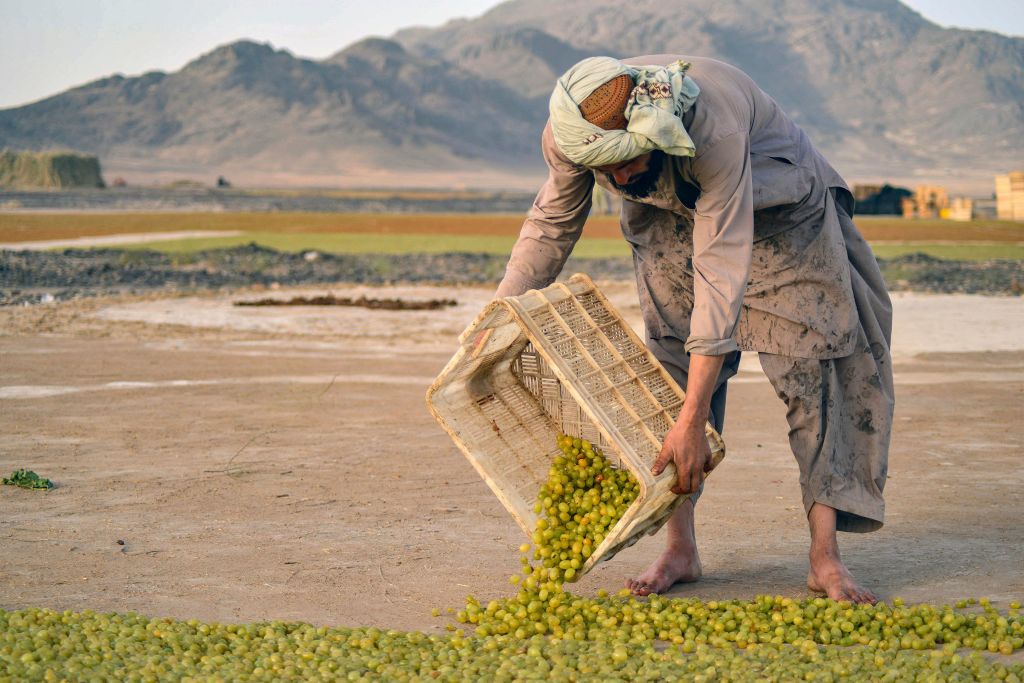'It was a big failure': How the U.S. bungled growing the Afghan economy


After spending $145 billion in two decades, the U.S. has withdrawn from Afghanistan and brought an end to its economic nation building efforts, which "largely failed," writes The Wall Street Journal.
Although Afghanistan's economy did grow as a result of overseas efforts, the system the U.S. helped build "relies overwhelmingly on foreign aid, most of which evaporated overnight," per the Journal. And while that foreign aid built roads, schools, and health facilities, critics say it neglected a "self-sustaining private sector."
Nowhere was the "failure to strengthen the Afghan state" more stark than in agriculture, argues the Journal. Even with $2 billion in U.S. spending funneled toward the cause, output "barely increased" over the last 20 years; in fact, it's share of GDP "has fallen to 20 percent from 70 percent in 1994, even though two in three Afghans still live in rural areas," writes the Journal.
The Week
Escape your echo chamber. Get the facts behind the news, plus analysis from multiple perspectives.

Sign up for The Week's Free Newsletters
From our morning news briefing to a weekly Good News Newsletter, get the best of The Week delivered directly to your inbox.
From our morning news briefing to a weekly Good News Newsletter, get the best of The Week delivered directly to your inbox.
For example, when the U.S. Department of Agriculture in 2010 paid the American Soybean Association to introduce soybeans to Afghan farmers, "it was a big failure," said one farmer who participated. By his account, there wasn't enough water to grow the crop, proper seeds weren't available locally, and there was no market for the harvested crop, writes the Journal. An ASA spokeswoman disagreed, saying the project achieved "successes in line with or exceeding its original objectives."
The U.S. also tried introducing alternative crops to opium poppies, but farmers were "reluctant" to give up one of their few cash crops. Other options like saffron, pine nuts, and cotton were "far less lucrative, and rutted roads and poor storage infrastructure made exports difficult."
International experts now fear the Afghan economy is on the verge of collapse. Read more at The Wall Street Journal.
A free daily email with the biggest news stories of the day – and the best features from TheWeek.com
Brigid Kennedy worked at The Week from 2021 to 2023 as a staff writer, junior editor and then story editor, with an interest in U.S. politics, the economy and the music industry.
-
 Could a part-and-part mortgage help you on to the property ladder?
Could a part-and-part mortgage help you on to the property ladder?Combining repayment and interest-only mortgages could become more popular as part of a push towards more flexible lending
-
 Is social media over?
Is social media over?Today’s Big Question We may look back on 2025 as the moment social media jumped the shark
-
 Should parents stop tracking their kids?
Should parents stop tracking their kids?Talking Point Experts warn the line between care and control is getting murkier – and could have consequences
-
 Maduro pleads not guilty in first US court hearing
Maduro pleads not guilty in first US court hearingSpeed Read Deposed Venezuelan leader Nicolás Maduro and his wife Cilia Flores pleaded not guilty to cocaine trafficking and narco-terrorism conspiracy
-
 Iran’s government rocked by protests
Iran’s government rocked by protestsSpeed Read The death toll from protests sparked by the collapse of Iran’s currency has reached at least 19
-
 Israel approves new West Bank settlements
Israel approves new West Bank settlementsSpeed Read The ‘Israeli onslaught has all but vanquished a free Palestinian existence in the West Bank’
-
 US offers Ukraine NATO-like security pact, with caveats
US offers Ukraine NATO-like security pact, with caveatsSpeed Read The Trump administration has offered Ukraine security guarantees similar to those it would receive from NATO
-
 Hong Kong court convicts democracy advocate Lai
Hong Kong court convicts democracy advocate LaiSpeed Read Former Hong Kong media mogul Jimmy Lai was convicted in a landmark national security trial
-
 Australia weighs new gun laws after antisemitic attack
Australia weighs new gun laws after antisemitic attackSpeed Read A father and son opened fire on Jewish families at Sydney’s Bondi Beach, killing at least 15
-
 How Bulgaria’s government fell amid mass protests
How Bulgaria’s government fell amid mass protestsThe Explainer The country’s prime minister resigned as part of the fallout
-
 Benin thwarts coup attempt
Benin thwarts coup attemptSpeed Read President Patrice Talon condemned an attempted coup that was foiled by the West African country’s army
